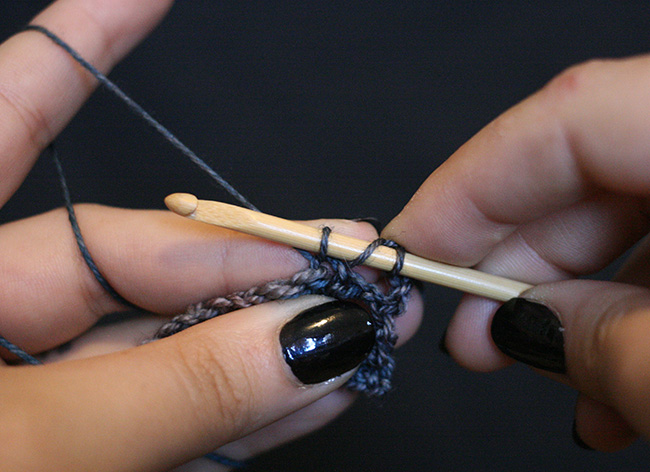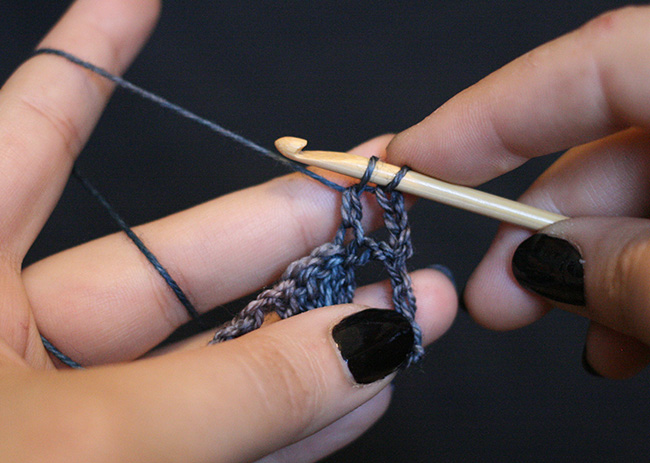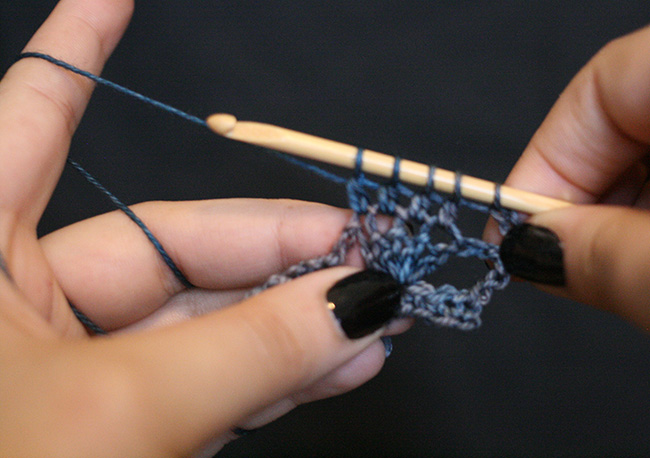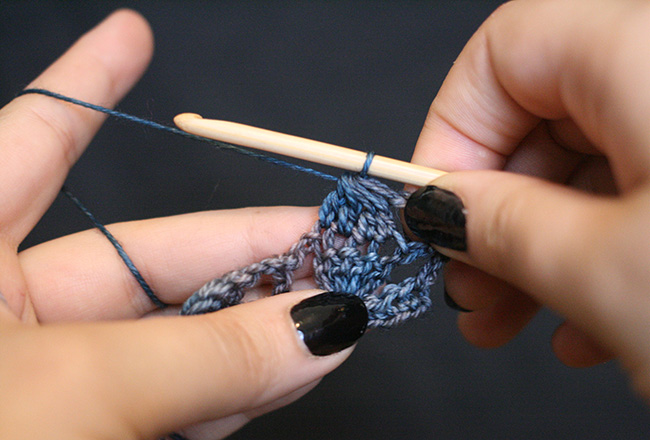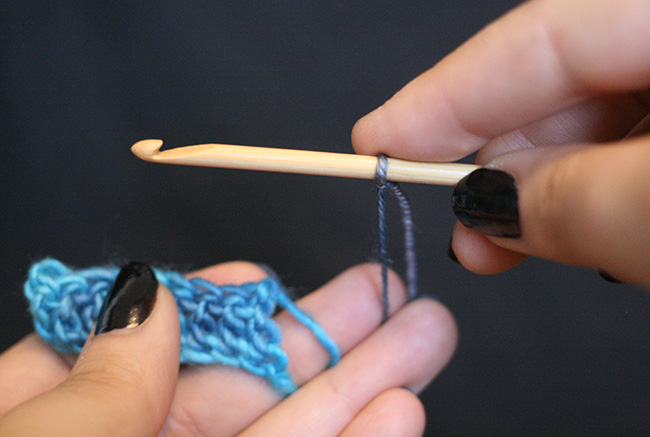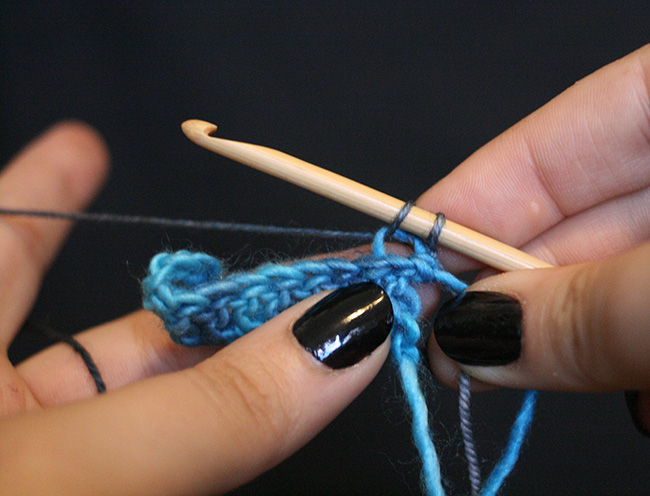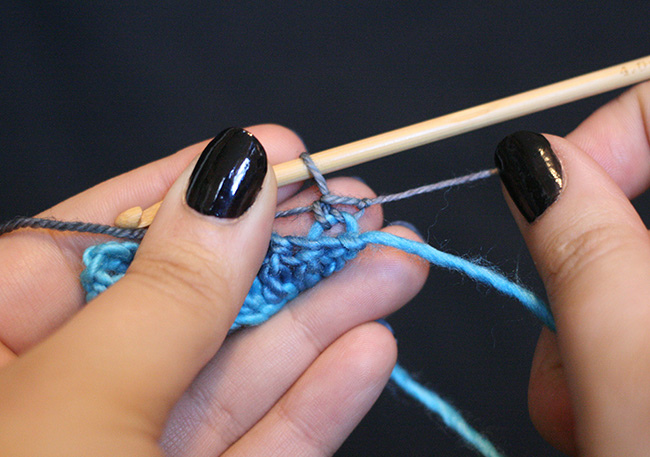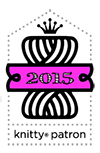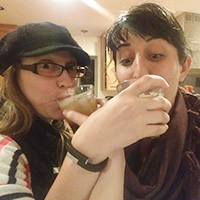Pattern: Bias Button Cowl
INTRODUCTION
Bias Button Cowl
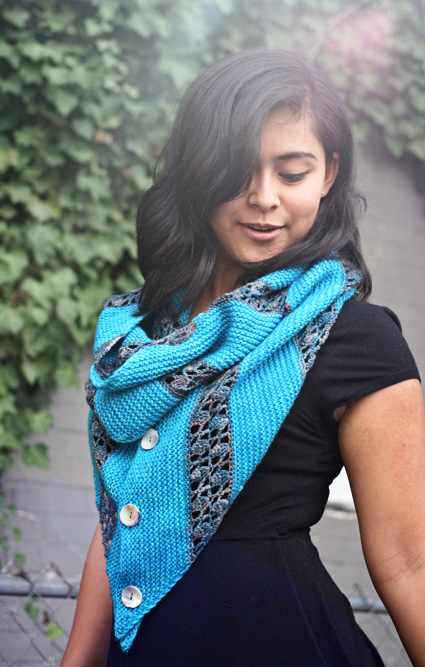
by Miriam Felton

Worked on the bias, this convertible scarf/cowl alternates knit garter stitch stripes in a larger yarn with crocheted lace stripes in a finer yarn for a study in contrast of texture, weight, drape, and color. A slipped stitch edge gives it a clean selvage, and it finishes with a stripe that has buttonholes, so you can easily button it closed to form a cowl.
 model: Miranda Natividad
model: Miranda Natividad
 photos: Miriam Felton
photos: Miriam Felton
FINISHED MEASUREMENTS
Width: 9.5 inches/24cm
Length: 77 inches/195.5cm
GAUGE
21 sts/32 rows = 4 inches/10cm in garter stitch
PATTERN NOTES
[Knitty's list of standard abbreviations and techniques can be found here.]
When crocheting onto the knitted stripes, crochet into the top loop of the bound off edge. When picking up stitches from the crochet stripes, pick up sts through the back loop of the crochet row.
Weaving in ends on this scarf/cowl can be daunting. I recommend weaving them in as you go.
2 dc cluster: yo, pull up a new stitch, yo, pull through 2 loops. Yo, pull up a new stitch, yo, pull through 2 loops, yo, pull through remaining 3 loops.
4dc shell: Work 4 double crochets the same stitch.
4dc cluster (photo tutorial above): *(Yo, insert hook into stitch indicated, yo pull through 2 loops), repeat from * in next 3 stitches leaving final loops on hook (5 loops on hook), yarn over and pull through all loops.
Standing SC: see tutorial above
Instructions for the Cable Cast On can be found here.
Crochet Pattern
Row 1 [RS]: Standing sc, 63sc, turn.
Row 2 [WS]: Ch4, dc in 3rd sc from hook, ch2, 4dc shell in 3rd sc, ch2, (dc in 3rd sc from hook, ch2, 4dc shell in 3rd sc, ch2) 9 times, dc in last sc, ch1, dc again in last sc, turn.
Row 3 [RS]: Ch3, dc in first dc, ch2, dc in next dc, (ch2, 4dc cluster in shell, ch2, dc in next dc) 9 times, ch2, 4dc cluster in shell, ch2, 2 dc cluster into next dc and top of turning chain, turn.
Row 4 [WS]: Ch4, dc in next 4dc cluster, ch2, (4dc shell in next dc, ch2, dc in next cluster, ch2) 9 times, 4dc shell in next dc, ch2, dc in top of turning chain, ch1, dc again in top of turning chain, turn.
Row 5 [RS]: Ch5, dc, ch2, 4dc cluster in shell, (ch2, dc in next dc, ch2, 4dc cluster in shell) 9 times, ch2, 2 dc cluster into next dc and top of turning chain, turn.
Row 6 [WS]: Ch1, sc in top of dc cluster, 2sc in next ch sp, (sc in top of cluster, 2 sc in next ch sp, sc in next dc, ch2) 10 times, sc in top of turning chain, fasten off.
CHART
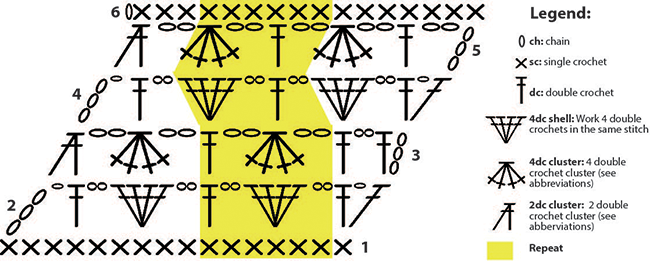
DIRECTIONS
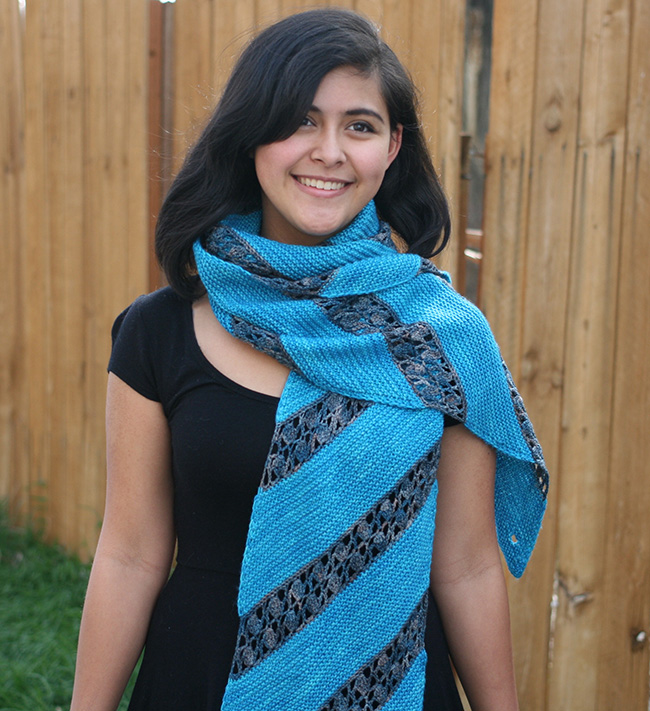
First (Knit) Stripe
With knitting needle and A, cast on 66 sts.
Setup Row [WS]: Knit.
Knit Row 1 [RS]: Sl1 wyif, kfb, k to last 3 sts, k2tog, k1. Mark as RS with a coilless pin marker or scrap yarn.
Knit Row 2 [WS]: Sl1 wyif, k to end.
Repeat Knit Rows 1-2 11 more times, then work Knit Row 1 once more.
Bind off as follows: Sl1 wyif, k1, pass the slipped st over the k st to bind it off, continue to bind off the rest of the the stitches normally.
Crochet Stripe
With RS facing and B, work Row 1 of Crochet Pattern (using chart or written isntructions) 64 sts across top edge (don’t work into slipped selvedge stitch on either side).
Work Rows 2-6 of Crochet Pattern. Fasten off.
Knit Stripes
With knitting needle and A, pick up and knit 64 sts (see Pattern Notes) from crocheted edge.
Setup Row [WS]: K1, kfb, k to last 2 sts, kfb, k1. 66 sts.
Work Knit Rows 1-2 12 times, then work Row 1 once more.
Keep alternating Crochet & Knit Stripes until you have 10 Knit Stripes and 10 Crochet Stripes, ending with a Crochet Stripe.
Final Knit Stripe w/ Buttonholes
Set up for as for standard Knit Stripe, and work Knit Rows 1-2 9 times.
Buttonhole row [RS]: Sl1 wyif, kfb, k3, (BO 3 sts, k13) 3 times (leaving 14 sts between each buttonhole), BO 3 sts, k3, k2tog, k1.
Following row [WS]: Sl1 wyif, k5, (using cable method, CO 3, k14) 3 times, CO 3, k7.
Repeat Knit Rows 1-2 twice more, then work Row 1 once more.
Bind off on WS as before.
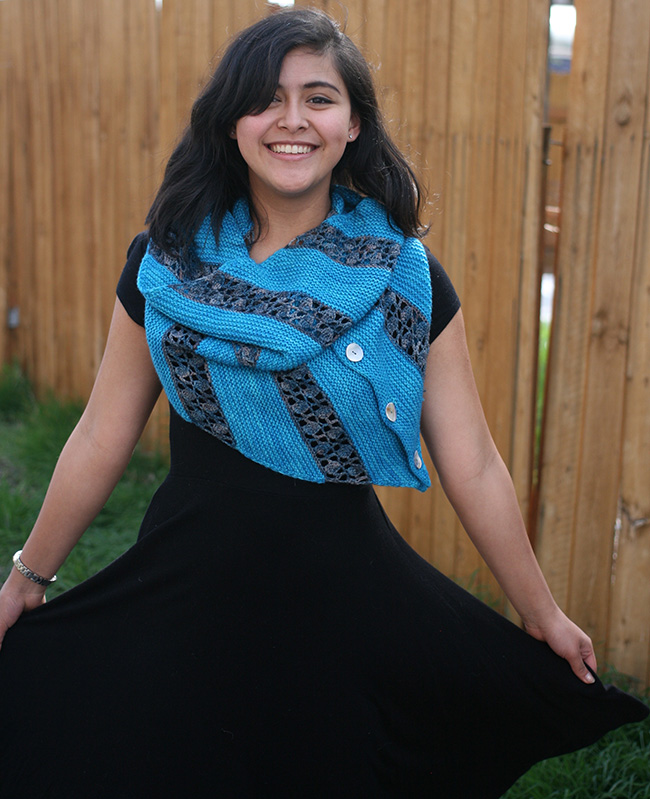
FINISHING
Block and weave in ends. Line up the bias edges so the cowl forms a loop, then sew the buttons on to match the buttonholes on the other end.
